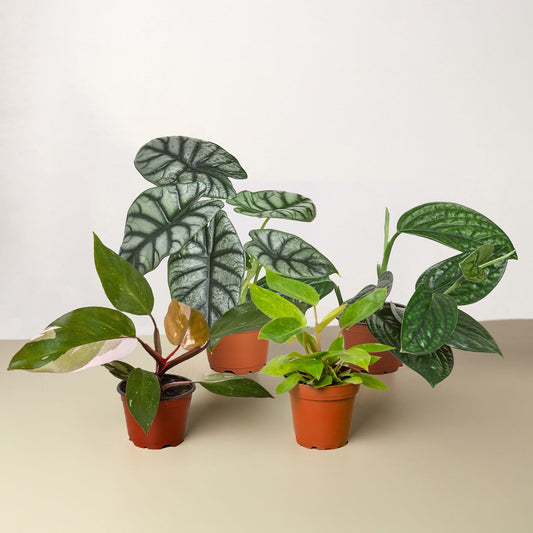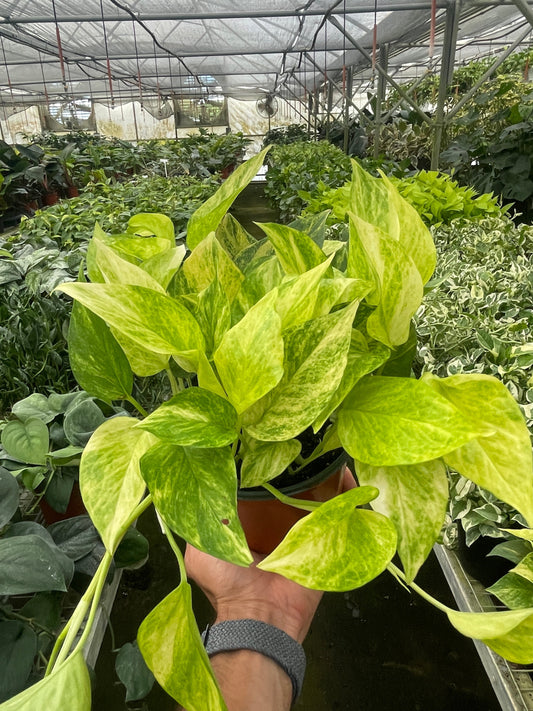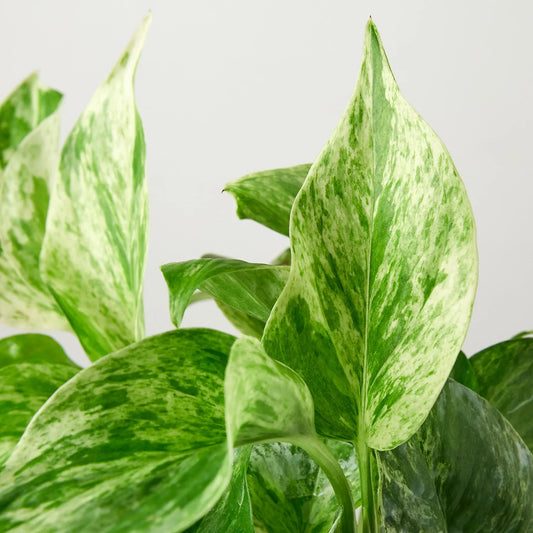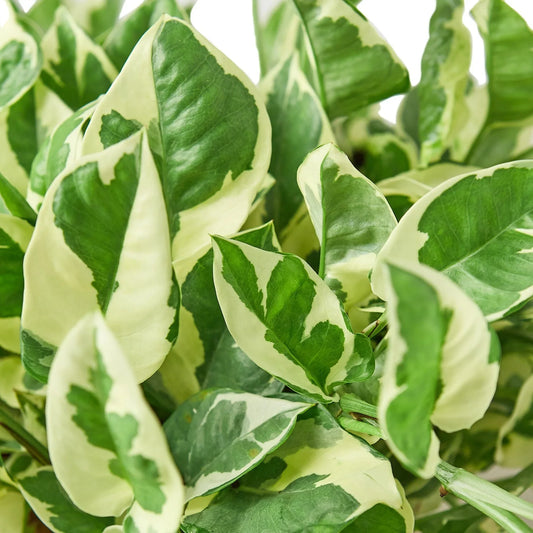Why Is My Pygmy Date Palm Falling Over?
Cafe Planta Team
Oh, the drama of a leaning Pygmy Date Palm! If your beloved palm is starting to look like it's had one too many and is threatening to topple over, you're not alone. It's a common issue that can leave plant lovers scratching their heads, wondering what went wrong.
In this article, we'll take a closer look at some of the reasons your Pygmy Date Palm might be falling over. We'll also explore some practical steps you can take to help it stand tall and proud once again. So, let's get to the root of the problem!
Understanding the Nature of Pygmy Date Palms
The Pygmy Date Palm, scientifically known as Phoenix roebelenii, is a popular choice for indoor and outdoor settings alike. With its graceful arching leaves and manageable size, it's no wonder this palm is a favorite among plant people. However, like all plants, it comes with its own set of quirks and care requirements.
These palms are native to Southeast Asia and thrive in warm, humid environments. They are relatively low-maintenance but can be a bit finicky if their basic needs aren't met. Here are a few things to keep in mind about these charming palms:
- Light: They prefer bright, indirect light. Too little light can lead to weak growth, while too much direct sunlight can scorch their leaves.
- Water: Moderate watering is key. Let the top inch of soil dry out between waterings to avoid root rot.
- Soil: Well-draining soil is essential to prevent water from pooling at the roots.
- Humidity: These palms love humidity. A little extra moisture in the air can go a long way.
Understanding these preferences helps us figure out why your Pygmy Date Palm might be falling over and how to get it back on track.
Poor Soil or Potting Problems
Let's start with the basics: soil and potting. Believe it or not, these can be major culprits when it comes to a leaning palm. If your palm's roots don't have a firm foundation, stability becomes a challenge.
Soil Selection
Your palm's soil acts as its anchor. If the soil is too dense or retains too much moisture, the roots can struggle to gain a firm hold. On the other hand, if it's too loose, the roots might not get the grip they need. Aim for a balance:
- Use a well-draining soil mix. A combination of potting soil, sand, and perlite can work wonders.
- Avoid heavy clay or dense soils that retain water, as these can lead to root rot.
Pot Size and Depth
The pot you choose matters more than you might think. If it's too small, the roots can become cramped, leading to instability. If it's too large, excess soil can retain water, causing roots to rot. Here's how to find the right fit:
- Select a pot slightly larger than the root ball, ensuring there's room for growth but not too much extra space.
- Make sure the pot has drainage holes to allow excess water to escape.
By ensuring your Pygmy Date Palm has the right soil and pot, you're giving it a sturdy base to stand tall.
Watering Woes
Watering can be tricky business. Too much or too little can both lead to a wobbly palm. Let's break it down:
Overwatering
Believe it or not, you can love your palm too much! Overwatering is a common issue that can lead to root rot, weakening the plant's hold in the soil. Signs of overwatering include yellowing leaves and a soggy pot.
- Allow the top inch of soil to dry out between waterings.
- Ensure your pot has adequate drainage to prevent water from pooling.
Underwatering
Conversely, neglecting to water can also lead to problems. If the soil is too dry, the roots can become brittle and unable to support the plant. Look for signs like browning leaf tips and dry soil.
- Set a regular watering schedule, adjusting based on the season and climate.
- Consider using a moisture meter to gauge when your palm needs a drink.
Finding that sweet spot with watering can make all the difference in keeping your Pygmy Date Palm upright and healthy.
Light and Environmental Factors
Light is a crucial element for all plants, and your Pygmy Date Palm is no exception. Insufficient or excessive light can both contribute to instability.
Insufficient Light
If your palm isn't getting enough light, it might start stretching towards the nearest light source. This can cause it to lean or fall over, as the growth becomes weak and elongated.
- Place your palm in a location with bright, indirect light.
- Consider rotating it regularly to ensure even growth on all sides.
Excessive Light
On the flip side, too much direct sunlight can scorch the leaves, leading to stress and weakening the plant. Signs of too much light include browning or crispy leaves.
- Provide some shade during the hottest part of the day if your palm is outdoors.
- Filter direct sunlight using sheer curtains if indoors.
By balancing the light your palm receives, you can encourage strong, healthy growth that supports a stable plant.
Pests and Diseases
Sometimes, the culprit behind a falling Pygmy Date Palm is a little more insidious. Pests and diseases can wreak havoc on your palm's health, leading to instability.
Common Pests
Spider mites, mealybugs, and scale insects are frequent visitors to Pygmy Date Palms. These pests can weaken the plant by sucking sap, leading to drooping or leaning.
- Regularly inspect your palm for signs of pests, such as webbing or sticky residue.
- Treat infestations promptly with insecticidal soap or neem oil.
Diseases
Fungal infections like root rot can also cause your palm to fall over. This often results from overwatering and poor drainage, as mentioned earlier.
- Ensure your palm has proper airflow and isn't overcrowded with other plants.
- Trim away any infected leaves and treat with a suitable fungicide if needed.
Keeping pests and diseases at bay is crucial for maintaining your palm's overall health and stability.
Improper Pruning
Pruning can help your palm look neat and tidy, but improper pruning can lead to imbalances that cause it to lean or fall over.
Pruning Techniques
When pruning, it's essential to maintain balance. Removing too many leaves from one side can cause your palm to become lopsided and unstable.
- Prune evenly, removing only dead or damaged leaves.
- Avoid cutting back more than one-third of the palm's leaves at a time.
Timing Matters
Pruning at the wrong time can stress your palm, impacting its stability. The best time to prune is during the growing season, typically in the spring and summer.
- Focus on regular maintenance during active growth periods.
- Minimize pruning during the dormant winter months.
With proper pruning, you can help your palm maintain its balance and stay upright.
General Care Tips for a Healthy Pygmy Date Palm
Now that we've explored specific issues, let's look at some general care tips to keep your Pygmy Date Palm healthy and stable.
- Humidity: Increase humidity around your palm by misting it regularly or using a humidifier.
- Fertilization: Feed your palm with a balanced liquid fertilizer during the growing season to promote strong growth.
- Temperature: Keep your palm in a warm environment, ideally between 65°F and 75°F.
By incorporating these general care tips, you'll create an environment where your Pygmy Date Palm can thrive and stand tall.
Repotting Your Pygmy Date Palm
If your palm continues to lean despite your best efforts, it might be time to consider repotting. Repotting can help address root-related issues and provide a fresh start for your plant.
When to Repot
Repotting should be done every 2-3 years or when you notice:
- Roots growing out of the drainage holes.
- The plant becoming top-heavy and unstable.
- Soil that no longer drains well or has a foul odor.
Steps to Repot
- Choose a pot that's one size larger than the current one.
- Gently remove the palm from its current pot, being careful not to damage the roots.
- Shake off excess soil and trim any dead or damaged roots.
- Place the palm in the new pot with fresh, well-draining soil.
- Water thoroughly and allow it to settle in its new home.
Repotting can help your Pygmy Date Palm regain its stability and continue to grow healthily.
Staking and Support
In some cases, providing temporary support can help your palm regain its balance. Staking is a practical solution for a plant that's struggling to stay upright.
How to Stake Your Palm
- Choose a bamboo or wooden stake that's slightly taller than your palm.
- Insert the stake into the soil, being careful not to damage the roots.
- Gently tie the trunk to the stake using soft ties or plant tape.
The goal is to provide gentle support while allowing your palm to strengthen naturally. Remove the stake once the plant regains its stability.
With a little care and attention, your Pygmy Date Palm will be standing tall and proud in no time.
Final Thoughts
We've covered a lot of ground on why your Pygmy Date Palm might be falling over. From soil and watering issues to pests and pruning, there are many factors to consider. By understanding these potential problems and applying the tips we've discussed, you can help your palm regain its balance and thrive.
At Cafe Planta, we're passionate about helping you care for your plants. Whether you're looking for new additions to your collection or need advice, we're here to support you. Feel free to email us or reach out on Instagram. Let's grow together and enjoy the beauty of nature in our homes!



















